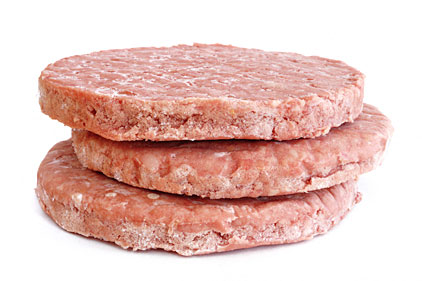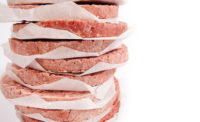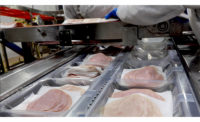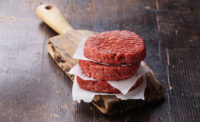As demand for ready-to-eat and pre-portioned foods grows, so does the need for interleaved and/or stacked protein patties, deli meats, sandwich kits and other products. Many companies continue to rely on manual labor to perform these tasks, but automated systems are not uncommon.
What is uncommon is robotic automation of interleaving and stacking. That could change quickly with the latest generation of robots on the market due to the flexibility the technology offers to precisely and consistently pick and place one or more items and quickly redeploy to new tasks.
“The food industry is of enormous interest to our members because it holds tremendous growth opportunities for robotics,” said Jeff Burnstein, president of Robotic Industries Association, the industry’s trade group. “In fact, we saw a 67 percent increase in 2013 in orders from North American robotics suppliers to the food and consumer goods industry. The capabilities of robots lend themselves to an increasing range of applications that involve direct contact with food, which is why we’re in the early stages of working with other organizations on standards for this application area.”
Today’s hygienically designed delta or single-arm robots and their end-of-arm tooling withstand washdown conditions. Some models meet USDA requirements. A few are freezer-compatible. Onboard vision allows the robot to handle multiple infeeds and random flows of product and to identify product by shape, color and orientation and reorient it for proper placement. Advances in safety technology have spurred development of collaborative systems, which allow closer interaction between human operators and robot.
A number of other factors make robots appealing for interleaving and stacking. Robot prices have declined in recent years while reliability has increased. Set-up, operation and maintenance are simpler due to simulation software and the transition away from proprietary controllers and operating pendants to more familiar programmable logic controllers and operator interfaces. In addition, built-in networking and communications features make it easier to integrate robotic systems with up- and down-stream equipment, as well as plant- and enterprise-level systems.
Washdown-compatible, food-grade delta and single-arm models are available for virtually any speed or payload requirement. Units feature a sealed mechanical design and smooth surfaces, generally require food-grade grease and often are equipped with vision and conveyor tracking.
One family of delta robots with an integrated vision system moves payloads up to 8 kg (17.6 pounds) at 100 cycles per minute. An all-stainless-steel model with smooth, rinse-off surfaces is rated IP69k (withstands detergents, acid and alkaline chemicals and high-pressure washdown). Lubricant-free joints resist most corrosives.
A five-axis articulated-arm robot can be floor-, wall- or invert-mounted. Hygienic design features of the IP67-rated robot include a smooth surface finish and an absence of crevices that could foster rust or bacteria growth. A hollow arm encloses the air line and electrical cable, while dedicated connections at the wrist simplify end-of-arm tooling design and integration. The unit moves 1 kg payloads at 120 cycles per minute, 2 kg payloads at 100 cycles per minute in a work envelope with a maximum reach of 1,130 mm.
Food-grade end-of-arm tools include silicone grippers, which are custom designed for the product to be handled. Although it’s a vacuum-based system, it doesn’t work like a traditional vacuum gripper, which grabs the item by suction. Instead, the vacuum is drawn to compress the gripper around the item to be picked and placed. One of the first commercial applications is for handling frozen fish sticks.
With robotics technology targeting this area of packaging and handling, a major operational leap in interleaving and stacking processes could be on the horizon.




Report Abusive Comment